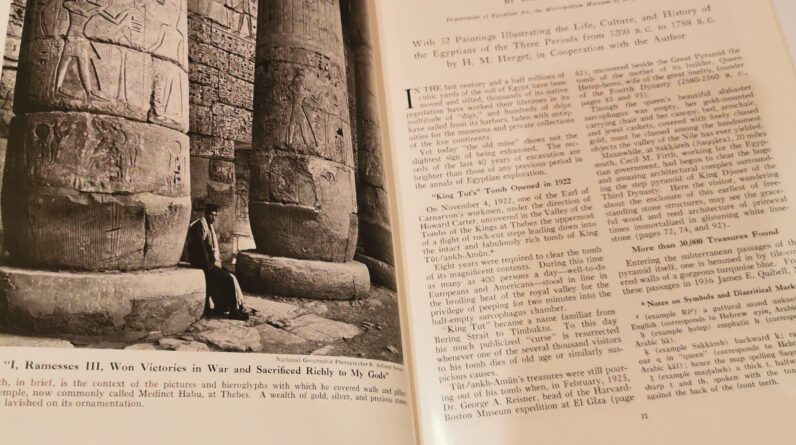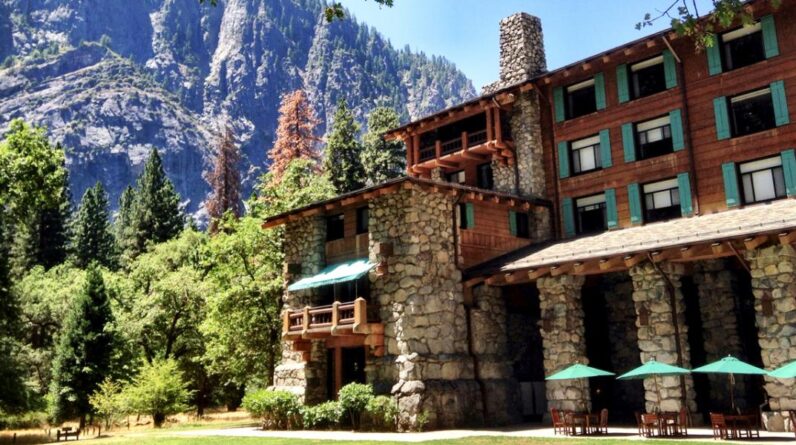
Nicaragua’s national instrument is the Marimba. The Marimba holds cultural significance in Nicaragua and is an integral part of their traditional music.
In Nicaragua, the Marimba is considered the national instrument and holds immense cultural significance. This unique percussion instrument is an integral part of Nicaragua’s traditional music and is known for its distinct and vibrant sound. The Marimba consists of wooden bars, mallets, resonators, and a frame, creating a rich and melodious tone.
It is played by striking the wooden bars with the mallets, producing a unique rhythm and melody that is deeply rooted in Nicaraguan history and heritage. The Marimba has become a symbol of Nicaraguan identity and reflects the country’s rich cultural diversity. Whether played at festive gatherings, religious ceremonies, or social events, the Marimba’s enchanting sound brings people together and showcases the vibrant spirit of Nicaragua.
The Origins Of Marimba: A Vibrant Cultural History
The origins of Nicaragua’s national instrument, the marimba, can be traced back to ancient roots and indigenous influences. The marimba has a vibrant cultural history that has shaped Nicaraguan music and traditions. This unique instrument with its resonant wooden bars and resonators is believed to have originated in Africa and was brought to the Americas during the transatlantic slave trade.
As African slaves were transported to different parts of the Americas, they brought their rich musical traditions and instruments with them. Over time, the marimba found its way to Nicaragua, where it became an integral part of the country’s musical heritage.
The marimba’s arrival in Nicaragua coincided with the blending of African, European, and indigenous influences, resulting in a distinct Nicaraguan musical style. The instrument’s melodic and rhythmic capabilities have made it a popular choice for traditional Nicaraguan music, including folkloric dances, religious ceremonies, and social gatherings.
Today, the marimba continues to be cherished as a symbol of Nicaraguan identity and cultural pride. Its enchanting sounds and historical significance highlight the rich and diverse musical heritage of Nicaragua.
The Evolution Of Marimba Music: A Distinct Nicaraguan Sound
Marimba music holds a significant place in Nicaraguan culture, serving as the country’s national instrument. Its evolution reflects the rich heritage and distinct sound of Nicaragua. Traditional rhythms and melodies form the essence of this unique musical genre. The captivating tunes of the marimba have become a symbol of cultural expression and pride amongst Nicaraguans.
With its roots deeply embedded in indigenous music, marimba music has evolved over the years, blending indigenous, African, and Spanish influences. This fusion has resulted in a diversified range of musical styles and techniques, each contributing to the rich Nicaraguan musical landscape.
Marimba music plays a vital role in various cultural celebrations and traditional ceremonies, reflecting the country’s diverse communities and their customs. From vibrant folkloric performances to solemn religious rituals, the marimba’s melodies evoke an emotional connection to Nicaraguan traditions.
Today, marimba music continues to thrive, not only within Nicaragua but also internationally. Its unmistakable sound, characterized by the marimba’s resonant wooden keys, enchants audiences and showcases the vibrancy of Nicaraguan culture to the world.
The Role Of Marimba In Nicaraguan Culture And Heritage
The marimba holds a prominent position in Nicaraguan culture and heritage. Its rhythmic melodies and vibrant sound have made it a symbol of national identity. Throughout the country, marimba music is widely cherished and celebrated.
In traditional celebrations and festivals, the marimba takes center stage. Its enchanting tunes fill the air, capturing the essence of Nicaraguan traditions. Whether it’s during religious processions, Independence Day, or local festivities, the marimba’s presence is undeniable.
The marimba’s significance goes beyond just recreational purposes. It is deeply intertwined with the cultural fabric of Nicaragua, representing the soul of the nation. Its tunes evoke feelings of pride and nostalgia, resonating with both young and old alike.
Moreover, the marimba serves as a bridge between the past and the present, honoring Nicaraguan folklore and traditions. Nicaraguans have passed down the art of marimba playing from generation to generation, ensuring its preservation and continuation.
So, when it comes to Nicaragua’s national instrument, the marimba undoubtedly takes the spotlight. Its rhythmic beats and soulful melodies captivate the hearts of Nicaraguans and exemplify their rich cultural heritage.

Credit: www.amazon.com
Uncovering Nicaragua’S National Instrument: A Cultural Treasure
Uncovering Nicaragua’s National Instrument: A Cultural Treasure Nicaragua, a country rich in cultural heritage, possesses a diverse array of traditional instruments. Among these, the marimba shines as the national instrument. Marimba ensembles hold a special place in Nicaraguan music, offering a glimpse into the country’s vibrant musical traditions. The marimba, a wooden percussion instrument, captivates listeners with its unique timbre and rhythmic patterns. In Nicaraguan marimba ensembles, various instruments blend harmoniously to create captivating melodies. These ensembles typically feature marimbas of different sizes, accompanied by guitars, bass guitars, and brass or wind instruments. Techniques employed in playing the marimba vary, showcasing the skill of the musicians. Mallets strike the wooden keys, allowing for intricate melodies and rhythmic variations. Musicians employ a range of playing styles, from the fast-paced and lively “Palo de Mayo” to the more solemn and melodic “Baile de las Inditas.” The marimba’s significance as Nicaragua’s national instrument reflects the nation’s deep appreciation for its cultural roots. Its distinctive sound serves as a testament to the country’s rich musical heritage, captivating both locals and visitors alike.Marimba Innovations: From Traditional To Contemporary
Marimba, a versatile musical instrument, holds a significant place in the cultural heritage of Nicaragua. With its distinctive resonant tones, the marimba has evolved over time, embracing both traditional and contemporary styles. Through innovative advancements, this iconic instrument has witnessed a fusion with various musical genres, creating a harmonious blend of sounds that captivate audiences.
Contemporary musicians have explored modern approaches to marimba composition, pushing the boundaries of this instrument’s capabilities. By incorporating elements from jazz, Latin rhythms, and classical music, these artists have paved the way for new and exciting compositions that showcase the marimba’s versatility.
In recent years, the fusion of marimba with other musical genres has gained popularity, propelling the instrument into uncharted territories. Crossing cultural boundaries, the marimba has found its place in contemporary music, enriching compositions with its distinct timbre and rhythmic depth.
From its rich traditional roots to its modern-day innovations, the marimba continues to enchant audiences worldwide. This unique instrument’s journey from traditional to contemporary exemplifies its versatility and enduring presence in the world of music.
Preserving And Promoting Marimba: Efforts And Initiatives
Nicaragua’s National Instrument:
The marimba holds a significant place in Nicaraguan culture as its national instrument. The country has implemented various measures to preserve and promote the marimba.
Government support and cultural policies have played a pivotal role in elevating the status of the marimba. Authorities have recognized its cultural importance and have taken active steps to safeguard and promote this traditional instrument.
In addition to governmental support, marimba workshops and educational programs have been organized at different levels to enhance awareness and provide a platform for individuals to learn and master this unique instrument.
| Efforts and Initiatives |
|---|
| Government Support and Cultural Policies |
| Marimba Workshops and Educational Programs |
Through these combined efforts, Nicaragua aims to preserve its cultural heritage by nurturing the art of marimba playing. The country stands as a steadfast advocate for the marimba’s place in the world of music and continues to celebrate its rich tradition.
The Impact Of Marimba On Nicaraguan Society And Beyond
The marimba holds a significant place in Nicaraguan culture as the country’s national instrument, impacting society not only within its borders but also beyond. Its influence is particularly evident in popular music and dance. With its distinctive and vibrant sound, the marimba has become an integral part of traditional Nicaraguan music, providing a rhythmic foundation and a unique melody. It creates an atmosphere of celebration during festivals, gatherings, and social events. The marimba’s infectious rhythms and melodies have also influenced popular music genres, such as salsa and merengue, both within Nicaragua and beyond. Furthermore, the marimba has gained international recognition and has been the subject of collaboration with musicians and artists worldwide. This collaboration has not only expanded the instrument’s reach but also enriched its musical heritage, as diverse styles and influences converge to create innovative and captivating compositions. The marimba truly transcends borders, spreading Nicaraguan culture and musical traditions across the globe.
| Marimba’s Influence on Popular Music and Dance |
|---|
| The marimba has become an integral part of traditional Nicaraguan music. |
| It provides a rhythmic foundation and a unique melody. |
| Marimba music creates an atmosphere of celebration during festivals and social events. |
| The marimba’s rhythms and melodies have influenced popular music genres like salsa and merengue. |
| International recognition and collaboration have expanded the marimba’s reach and enriched its musical heritage. |
| Collaborations with musicians and artists worldwide have resulted in innovative and captivating compositions. |
Frequently Asked Questions For Which Is Nicaragua’S National Instrument
What Is The Instrument Used In Nicaragua?
The instrument used in Nicaragua is the marimba. It is a percussion instrument made of wooden bars and is played by striking the bars with mallets. The marimba is an important part of Nicaragua’s traditional music and cultural heritage.
What Is The Typical Music In Nicaragua?
Nicaraguan music is diverse, blending elements of indigenous, Spanish, and Afro-Caribbean influences. Traditional music includes marimba, folk songs, and religious music. Popular genres like reggaeton and salsa are also enjoyed, reflecting the country’s modern musical tastes.
What Is The National Dance Of Nicaragua?
The national dance of Nicaragua is the Palo de Mayo. It is a vibrant and energetic dance performed during the month of May.
What Is The Culture Of Nicaragua?
Nicaraguan culture is a rich blend of indigenous heritage, Spanish influence, and Afro-Caribbean traditions. It encompasses vibrant music, dance, and art, with celebrations like the colorful Carnival and lively folkloric dances. Nicaraguans are known for their warm hospitality and strong family values.
Conclusion
Recognized as the heart and soul of Nicaraguan culture, the marimba proudly holds the title of the national instrument. Its vibrant melodies and rhythmic beats have become synonymous with the country’s rich heritage and traditional folklore. As a symbol of Nicaraguan identity and pride, the marimba continues to captivate audiences with its enchanting sounds, embodying the spirit and soul of this beautiful Central American nation.




